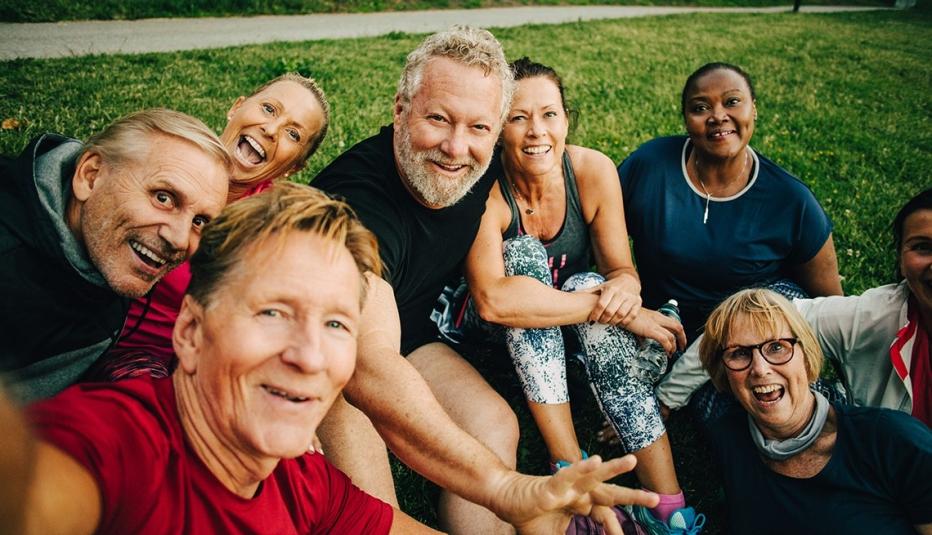AARP Hearing Center


As the nation’s largest nonprofit, nonpartisan organization dedicated to empowering people age 50 and over to choose how they live as they age, AARP frequently references age in its advertising, marketing and editorial content. This national survey of 1,200 adults age 50 and over was fielded to hear from people in their own words how they feel about their lives as they age and how they would like to be addressed in the marketplace.
It is always important to understand the psychographics of your audience before communicating with them. These findings are relevant not just to aging advocates and social service providers, but to product developers, marketers, and content creators who want to tap into the growing power of this market. Attitudes on aging are constantly evolving, and the language we use must evolve as well. Consider these key insights from the research:
- Consider context in your choice of language. People in this age group feel more positively about age-based discount offers than age-based products or services. Also, a term acceptable with friends or family may not be acceptable in product marketing or in the workplace.
- If you do not need to address consumers by their age group, then don’t. People in this age group don’t define themselves by their age, so you shouldn’t. In fact, they would prefer to buy products and services targeted to a wide range of ages.
- If you need to address consumers by their age group, then use neutral or factual descriptors such as “people 50-plus” or “people age 50 and over.”
- Use language that reinforces knowledge, independence, and experience — personal characteristics people in this age group identify with the most.
- The terms "old" and "elderly" have strong negative associations, so limit use of these terms.
- Don’t treat people in this age group as a monolithic group. They have a wide range of experiences, perspectives, and preferences.
- Reducing ageism is important to all people in this age group, but especially for women as well as LGBTQ+ and Black communities.
- People in this age group are twice as likely to describe themselves as connected than alone. Consider reflecting the power of social connections back to this segment.
- People in this age group have a positive outlook on life. Find ways your brand can reinforce their positive values (e.g., learning, personal growth, and self-acceptance).
- To complement text, check your visual communications for how they portray people in this age group. Use realistic and inclusive images. Avoid age-related stereotypes and clichés.
Be Positive, Inclusive
The study found that the vast majority of adults age 50 and over have a positive view of getting older. Nearly all (96%) believe “every year should be teaching us all something valuable” and “you are never too old to set another goal.” Yet, 75% acknowledge that as people get older, they become “set in their ways” and 54% feel “getting older is a battle.”
Most respondents see themselves as being experienced, independent, and knowledgeable. This self-perception increases with age, as it is an even more common view among those age 65 and older, compared to adults age 50 to 64. In addition, at least half of people ages 50 and over say they are learning and adaptable. In contrast, fewer than one in twenty see themselves as being helpless, close-minded, and stuck.
Create for All Ages
The study found that 66% of adults age 50 and over prefer to buy from brands that feature a mix of ages in their ads. Women (72%) and African Americans (78%) are more likely to feel this way. In addition, 73% prefer brands that cater to people of all ages, not just toward an older demographic.
Fight Ageism, Not Aging
More than six in 10 people age 50 and over agree that eliminating ageism is important. Women rate the topic more important than men, and LGBTQ+ and Black/African Americans rate the topic as more important than the general population. Those who feel strongly enough about ageism in advertising to boycott a brand are more likely to be on the younger end of the continuum — i.e., ages 50–59. People age 50-plus who identify as LGBTQ+ express greater desire for brand inclusivity and demonstrate stronger feelings of dissatisfaction toward stereotypical ads.
Besides being good for the bottom line, portraying positive concepts of aging in advertising could also help to destigmatize growing older for everyone.
To see how data from this study can help brands reframe aging, check out our data story, Is Your Brand Missing Out on the 50+ Market?
Methodology
This AARP study is based on an online survey of 1,200 Americans age 50 and over that was fielded January 29–February 3, 2021. Data were weighted by age, region, education, and race/ethnicity to reflect the U.S. age 50 and over population.
For more information, please contact Colette Thayer at cthayer@aarp.org or Brittne Kakulla at bkakulla@aarp.org.































































